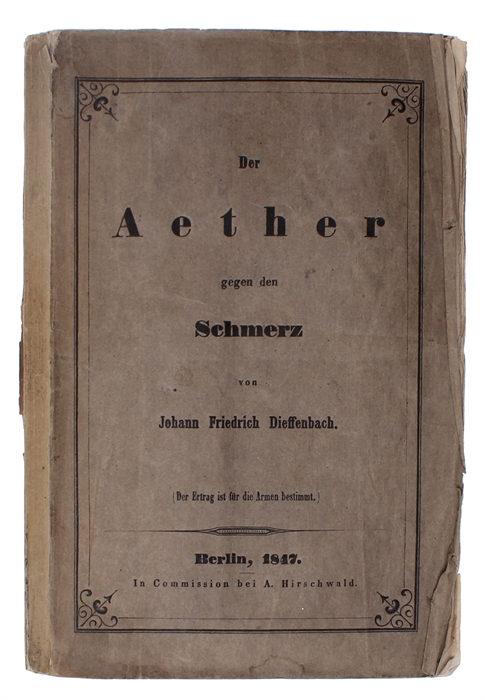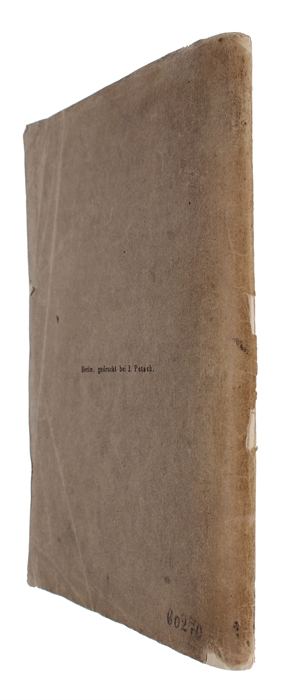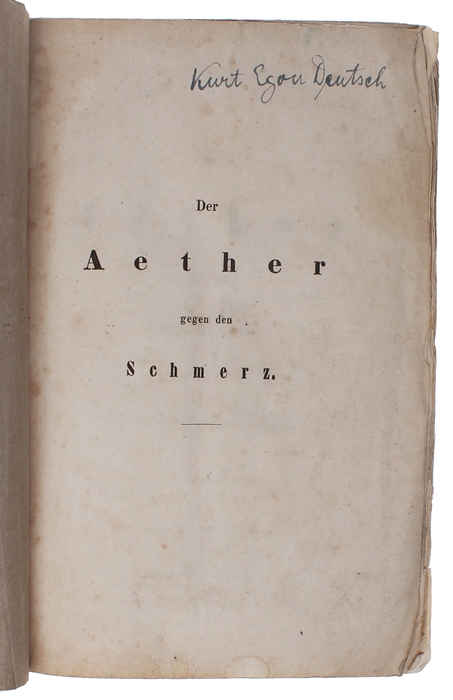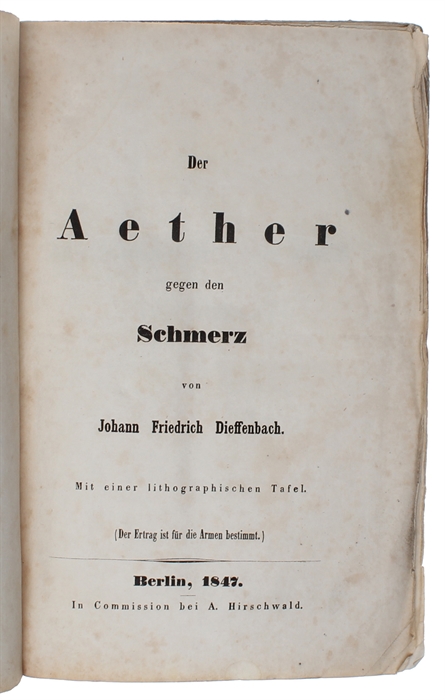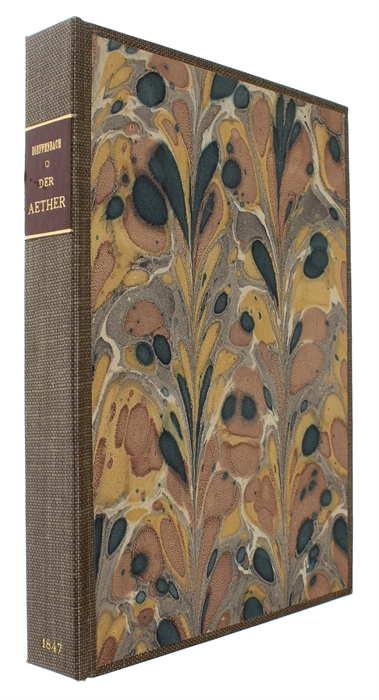"THE WONDERFUL DREAM THAT PAIN HAS BEEN TAKEN AWAY FROM US HAS BECOME REALITY"
DIEFFENBACH, JOHANN FRIEDRICH.
Der Aether gegen den Schmerz.
Berlin, A. Hirschwald, 1847.
8vo. Uncut in the original printed wrappers. Previous owner's name (Kurt Egon Deutsch) to half-title. Wrappers a bit discoloured and frayed, and spine missing small part of paper. Spine skewed. Internally with light marginal brownspotting, otherwise a good copy. Housed in a cloth clam-shell box. XII, 228 pp. + 1 engraved plate.
Rare first edition, here in the original printed wrappers, of Dieffenbach’s landmark work in which he helped popularize aether as an anesthetic and, for the first time, applied “ether anesthesia for plastic operations. Dieffenbach made his first use of the anesthetic in reconstructing a nose. Dieffenbach’s work helped bring about the early acceptance of anesthesia in Germany.” (Garrison & Morton). Johann Friedrich Dieffenbach (1792 -1847), German surgeon, specialized in skin transplantation and plastic surgery. His work in rhinoplastic and maxillofacial surgery established many modern techniques of reconstructive surgery. His endeavours comprehended subcutaneous operations such as tenotomy, the surgical division of a tendon. Before the discovery of blood typing and blood matching, Dr. Dieffenbach researched blood transfusion, Dieffenbach performed the first successful myotomy for the treatment of strabismus on a seven-year-old boy with esotropia. He settled in Berlin, where he focused his attention on plastic and reconstructive surgery. Waller 2443
After the successful use of ether as a surgical anaesthetic Dieffenbach famously stated that: "The wonderful dream that pain has been taken away from us has become reality. Pain, the highest consciousness of our earthly existence, the most distinct sensation of the imperfection of our body, must now bow before the power of the human mind, before the power of ether vapor."
The present work was published shortly before Dieffenbach died. Here he recorded his results of his practical experience with etherization:
“He expressed the opinion that since ether was able to obviate completely even the most intense pain during capital operations, it afforded the greatest possible relief to the patient; but for the surgeon […] it merely made the matters more difficult. He stressed the dangers of etherization: its liability to produce apoplexy and haemorrhage, the possibility of instantaneous death through overdosage, the tendency to increased post-operative bleeding, the slow healing of wounds where much tissue had been lost. He found indeed, that the post-operative condition of the patients who had been etherized was in general less favourable than of patients operated upon without ether.” (Davison, The Evolution of Anaesthesia).
He soon won recognition as a leading plastic surgeon. In the following years he published a large number of writings describing his methods of operation, above all in the field of rebuilding surgery. In 1829 he was made chief physician to the surgical department of the Berlin Charité. At this period he turned his attention to the recently introduced subcutaneous operations like tenotomys and other methods of treating orthopaedic disturbances. He also concerned himself with blood transfusions, with the healing of stuttering and blinking.
Shortly before his death he authored the last, and most famous and influential, of his medical dissertations introducing painless plastic surgery.
Garrison & Morton 5659.1
Order-nr.: 60367

